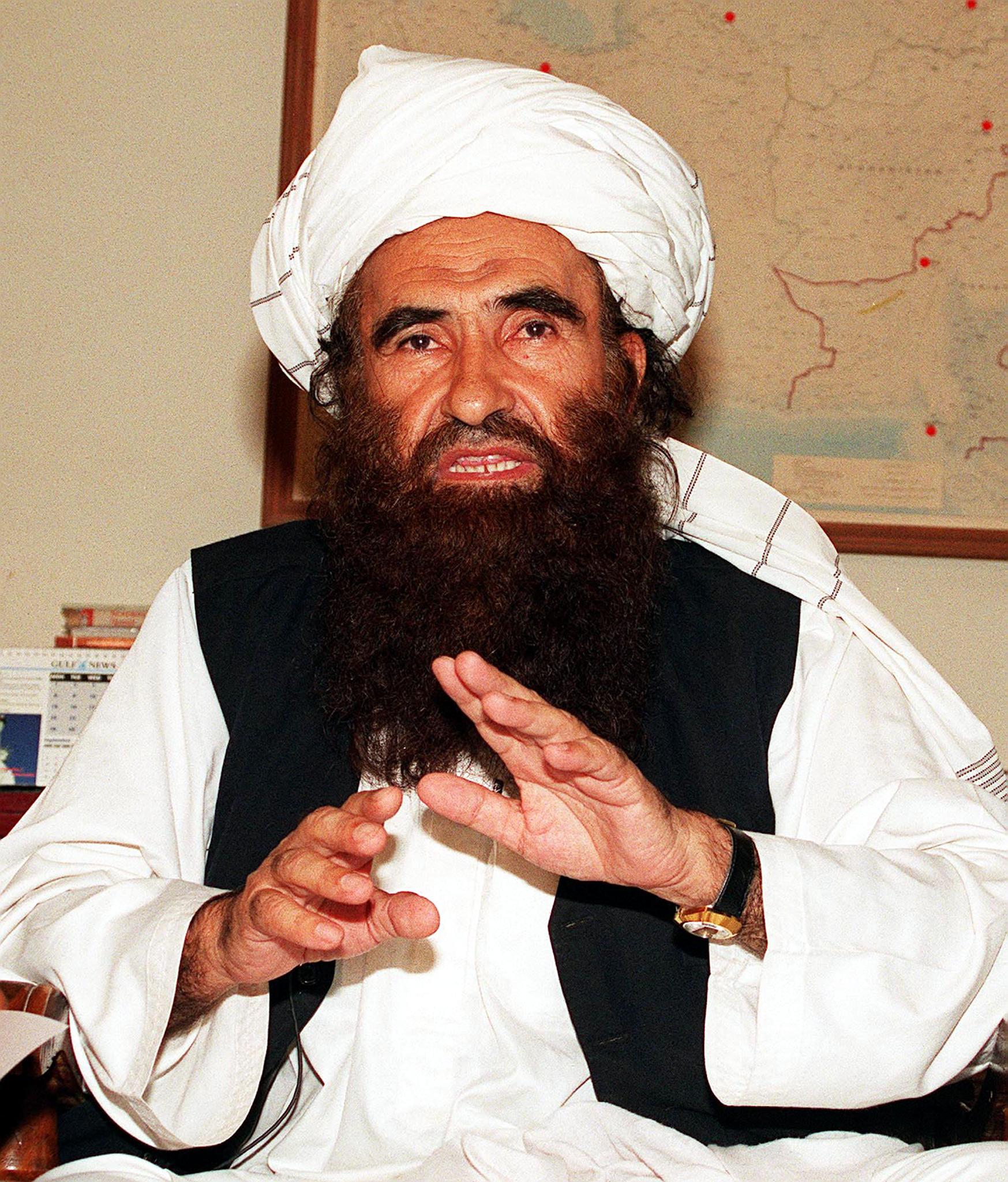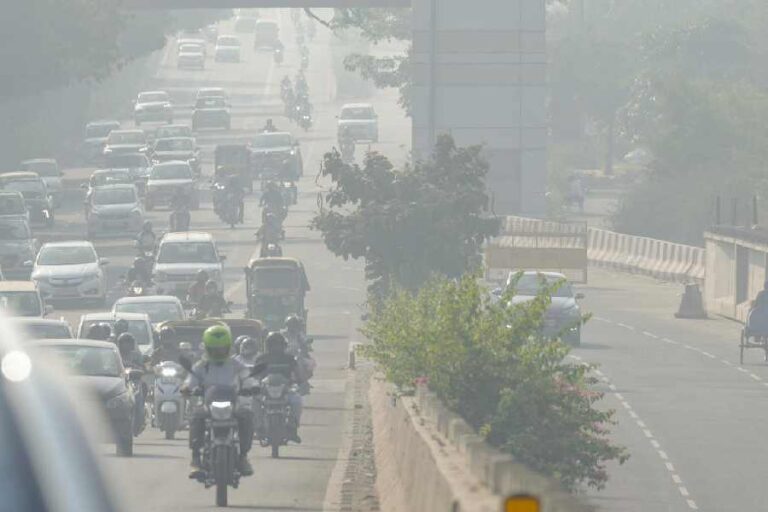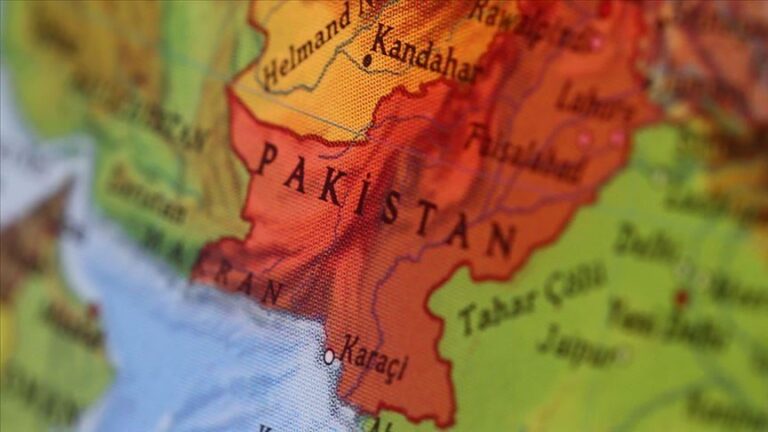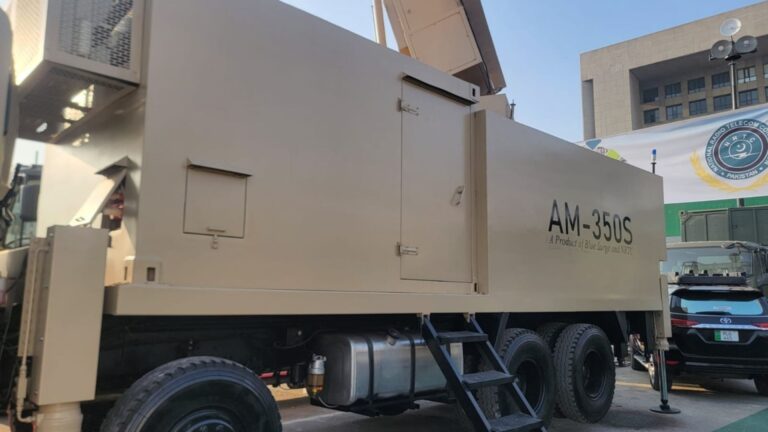
Source:AFP
Rahimullah Yusufzai
When the Afghan Taliban announced on September 3 that Maulvi Jalaluddin Haqqani had died from “natural causes” after a long illness, the loss was emotional and largely symbolic for the militants as he had already faded from memory after being rendered inactive more than a decade ago by an unspecified disease.
Haqqani belonged to a bygone era. He was a man from the past, the 1980s and 1990s to be precise, when the Afghan jihad against the Soviet occupying forces in Afghanistan and later the Taliban war against the Afghan mujahideen factions were at its peak. Haqqani remained active until the early 2000s when he began organizing resistance against the invading US-led coalition forces.
Much about Haqqani during his last years of life remained a secret. The timing of his death was a matter of contention as he was reported dead on a few occasions in the past. Afghan officials claimed he died at least four years ago. A former Afghan spymaster made the bizarre claim that the belated announcement of Haqqani’s death was linked to the visit of US Secretary of State Mike Pompeo to Pakistan as Islamabad was playing yet another game in the region to promote its interests.
He did not bother to check that such visits by US officials to Pakistan have become a matter of routine and are now largely unremarkable.
The nature of disease that paralyzed and made him bedridden is not known, though it is said he suffered a stroke. Haqqani’s place of burial also is not known. Though the Taliban spokesmen insisted that he was buried in Afghanistan, many Afghans believe his burial took place in Pakistan. Nobody has provided any evidence to back these claims. The Taliban announcement that Haqqani was 72 at the time of his death is also questionable as different years have been mentioned as the year of his birth.
Secrecy has been the strength of Taliban and it has helped the group’s cause. It isn’t the first time that Taliban, or the Haqqani network that is part and parcel of the group, managed to keep a secret. Before managing to keep the elder Haqqani’s illness, death and burial a secret, Taliban had hidden from the world for tactical reasons the group’s founder Mulla Mohammad Omar’s death for more than two years.
Though Haqqani was one of the most powerful and respected Afghan mujahideen commanders who fought against the invading Soviet forces and the pro-Moscow communist regime in Kabul in the earlier part of his career as a fighter, his subsequent role in founding and building the militant Haqqani network into a formidable and feared force received a lot more attention.
Haqqani was a hero for the Afghan mujahideen and the Taliban, but his opponents termed him a ruthless man who introduced suicide bombing in Afghanistan and killed those disagreeing with him. The Taliban statement announcing his death was obviously fulsome as it described him as a religious scholar and an exemplary warrior who was “among the great distinguished jihadi personalities of this era.”
There was a time in the 1980s when Haqqani and other Afghan mujahideen leaders were hailed as freedom fighters by US President Ronald Reagan. Though Haqqani did not visit the US and meet Reagan at the White House in May 1985, other mujahideen leaders made the trip. Maulvi Yunis Khalis, head of the Hezb-i-Islami (Khalis) to which Haqqani belonged, led the delegation to the US. As both henna-dyed their long, bushy beards, Khalis was inexplicably mistaken for Haqqani and it was wrongly reported in the media that the Haqqani network founder had been hosted by the Reagan administration at the White House.

As Haqqani proved his mettle in guerilla warfare, he started earning admiration from unexpected places and individuals. The late Congressman Charlie Wilson, who lobbied the US Congress and secured millions of dollars to assist the Afghan mujahideen, was so fond of Haqqani that he referred to him as “goodness personified.” An Arab woman from the United Arab Emirates (UAE) reportedly started liking the turbaned warrior and eventually married him as his second wife. The couple reportedly had two sons together, but she and her children continued to live in the UAE and apparently did not get involved in Haqqani’s activities as a fighter.
Throughout the Afghan jihad, the American CIA, Pakistan’s ISI and other intelligence agencies were keenly supporting Haqqani. US officials have admitted that at the time he was a prized asset for the CIA. Along with Ahmad Shah Masood, Haqqani was acknowledged as the most powerful mujahideen commander fighting the Soviet Red Army troops in Afghanistan from 1979-89. This was the reason they received a much higher share of resources, both weapons and money, than other field commanders. There were reports that those funding the Afghan jihad gave Haqqani and Masood a share of the resources almost equal to that given to their parent parties, the Hezb-i-Islami (Khalis) and Prof. Burhanuddin Rabbani’s Jamiat-i-Islami, respectively. Haqqani attracted significant donations from wealthy Muslims, particularly Arabs, as he was considered a capable leader ready to train and protect Arabs and other ‘guest’ fighters from different countries. It was during this period that Haqqani built life-long association with the non-Afghan jihadis, including the al-Qaeda leader Osama bin Laden. More foreigners flocked to him than to the other mujahideen commanders. Those contacts with al-Qaeda and other militant groups became durable and were one of the major reasons for the Haqqani network to be sanctioned by the UN.

Haqqani, the Pashtun cleric and warlord belonged to the Zadran tribe from the southeastern Paktia province, but his influence spread beyond his tribe and area. Adept at forging alliances and attracting fighters transcending Afghanistan’s mosaic of tribal and ethnic groups, he first rose to prominence in Loya Paktia, the old name of the new provinces of Paktia, Paktika and Khost, and later became known all over the country.
Though Haqqani had been active in Afghanistan’s splintered Islamic movement in the mid-1970s and was among the earliest Afghan fighters to have shifted to Pakistan after the collapse of an Islamist uprising against President Sardar Mohammad Daoud, his active career as a mujahideen commander began when the Afghan communist military officers captured power as a result of the Saur Revolution in April 1978. The December 1979 Soviet invasion of Afghanistan gave an impetus to the fight being waged by Haqqani and other Afghans as they justified it as a jihad against the foreign occupation force.
In due course of time, Haqqani established the first mujahideen radio channel that operated from his vast, tunnel-based training camp in Zhawar in Afghanistan’s Khost province near the border with Pakistan. This base, built with money provided by bin Laden and other donors, was attacked by Soviet and Afghan forces backed by airpower for days, but Haqqani’s men managed to defend it every time.
Haqqani’s fame rose in 1991 when he led the assault to seize Khost, the first city captured by the mujahideen after the February 1989 withdrawal of the Soviet forces from Afghanistan. This was his moment of glory. In an interview with this writer in Khost a day after the city’s fall, he predicted that this was the beginning of the end for President Dr. Najibullah’s Kabul regime. His words were prophetic as the communist regime collapsed less than a year later and was replaced by the mujahideen government in April 1992.
Though Haqqani was made minister for justice, the cabinet barely functioned due to the mujahideen infighting. The fractious mujahideen groups made a mess of the government while the devastating battle for Kabul widened the split and weakened them to such an extent that Taliban captured power without facing any real resistance in 1996.
Haqqani formally joined the Taliban in late 1995, but he played a minor role in the subsequent battle for Kabul in September 1996. It is said he was always a Talib, having studied at the Darul Haqqania madrassa in Akora Khattak in Khyber Pakhtunkhwa’s Nowshera district and proudly affixing Haqqani to his name like its other graduates. However, as a shrewd man he bided his time and joined the Taliban movement when it began conquering one province after another. In the Taliban cabinet formed after the fall of Kabul, Haqqani became the minister of border and tribal affairs. However, Haqqani continued to provide guidance and fighters to the Taliban force fighting battles in northern Afghanistan to seize the remaining territory held by the Northern Alliance. In the end, Taliban seized more than 90 percent of Afghanistan’s territory, but the fighting never stopped until 9/11 happened and the US decided to invade the country to destroy al-Qaeda for daring to attack America and oust Taliban from power for harbouring bin Laden.
Like millions of other Afghans, Haqqani became a refugee in Pakistan, moving his extended family to nearby North Waziristan where he first lived in the main town, Miranshah, and then about three kilometres away at the camp for Afghan refugees at Danday Darpakhel village. The family stayed there, braving several US drone strikes that killed many of its members and at least one raid on the Haqqani-run mosque-cum-madrassa, Manba al-Ulum, by American troops conducted with Islamabad’s permission until the Pakistani military launched the massive Zarb-e-Azb operation in June 2014 and forced the surviving local and foreign militants to surrender, relocate or escape to Afghanistan.
The contacts developed by Haqqani with Pakistan during the days of the Afghan jihad continued for years. Even now Pakistan is accused of sheltering the Haqqani network, led since the past decade by his son Sirajuddin Haqqani, now in his early 40s and a most wanted man with a head-money of $10m placed by the US. Pakistan has been denying the allegation, arguing that the Zarb-e-Azb military action targeted every armed group, including the Haqqanis, in North Waziristan. The US and its allies remain unconvinced to this day. Way back in September 2013, the chairman of the US Joint Chiefs of Staff Committee, Admiral Mike Mullen directly blamed Pakistan for harbouring the Haqqani network by alleging that it was acting as the veritable arm of the ISI. He made the statement exactly a year after the US designated the Haqqani network as foreign terrorist organization. However, this has not stopped the US from holding clandestine meetings with representatives of the Haqqani network because it knows that no peace deal with the Afghan Taliban would work without the Haqqanis’ participation, more so after appointment of Sirajuddin Haqqani in 2015 as one of the two deputies to Taliban supreme leader Sheikh Haibatullah Akhundzada.

The elder Haqqani was a great survivor. He mourned the loss of four young sons in fighting and suffered when another son was captured and sentenced to death. He survived ambushes and US airstrikes in Afghanistan and Pakistan, evaded capture and overcame political intrigues. He held high positions, including being made the commander of all Taliban forces in October 2001 when the US invaded Afghanistan and member of the Taliban’s highest decision-making Rahbari Shura.
History would have been different if President Hamid Karzai’s overtures to Haqqani after the fall of the Taliban regime could have overcome US objections and led to a deal. Before long, Haqqani was regrouping his men, beginning with just a dozen fighters to wage a new round of guerilla war. This time the enemy was the US, his former ally, and the Afghan government installed by it in Kabul.
Though Haqqani could not remain active due to illness, he tried to stay relevant by issuing a video statement in March 2008, passing on his skills and giving instructions to Taliban fighters based on his battlefield experiences and advocating jihad against the anti-Islam forces that he claimed were occupying Afghanistan and other Islamic countries.
The last time Haqqani spoke was a statement attributed to him on November 13, 2013 when he declared his son, Naseeruddin Haqqani, who was murdered in Islamabad, a martyr and celebrated the occasion by congratulating himself and the Taliban ameer (head) and fighters. Obviously, he was too ill and weak to record video footage as he did in 2008, but the tough words were evidence enough that Haqqani remained defiant as ever.
Haqqani fought all his life against different enemies, including two superpowers, USSR and US, and refused to make compromises on his beliefs. He founded an armed group driven by religious, ideological and political causes. The Haqqani network is still largely shadowy and known for its resilience and capacity to cause violence. Though the network is part of the Taliban movement, it has operated independently for so long that it is still allowed to raise donations and plan attacks.
Haqqani’s legacy has been the use of violence to achieve the desired goals. His resistance to the foreigners who occupied Afghanistan won him many admirers, but his orders to kill Afghans who espoused different beliefs made him a hated figure among his own people.
Rahimullah Yusufzai is the Resident Editor at The News International, Peshawar and is a Correspondent of BBC World Service.







